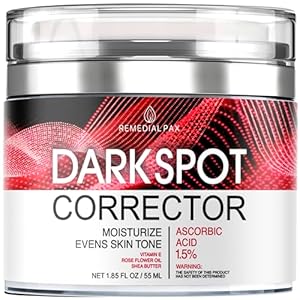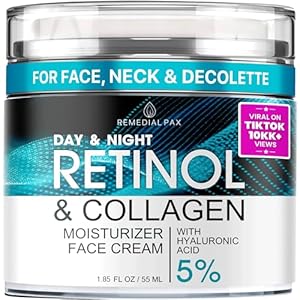
The largely crowdfunded Participatory Evaluation of Aging with Rapamycin for Longevity (PEARL) clinical trial was organized by Lifespan.io, the funds raised in 2021. Those of us who advocate for more (and, importantly, more cost-effective) clinical trials of existing low-cost therapies that might at least modestly affect aging hoped for the PEARL trial to be a good example of the way in which one can put together and run a responsible, low-cost clinical trial. A blueprint that others could follow, or a first example of more trials that could be undertaken by organizations such as Lifespan.io. Everything moves very slowly in medicine, and if the PEARL trial is to be the first in a series, it remains the case that all of the necessary activities and enthusiasm leading to that outcome have yet to happen.
Today’s open access paper reveals the first results from the PEARL trial. Rapamycin is a calorie restriction mimetic drug capable of upregulating autophagy. As such we should expect it to have approximately similar outcomes on health measures in the short term in mice and humans, but to do little for human life expectancy. One of the more interesting questions is whether rapamycin treatment, or indeed any robustly effective calorie restriction mimetic targeting autophagy, can outperform the benefits of exercise in our species, as it does in mice. One could argue either way, but there is no good way to know for sure other than to conduct clinical trials with enough participants to achieve statistical significance.
Note that the doses used in the PEARL trial are in effect lower than the commonly used anti-aging dose of 5 mg/week. The rapamycin used in the trial was compounded in a way that turns out to have a much lower bioavailability than mass-manufactured pill forms of the drug. Further, it looks to be the case that more of the data would be statistically significant given a larger study population; whoever chooses to follow on with another study of rapamycin as a treatment to slow aging and improve late-life health should probably try for at least twice as many participants.
Safety and efficacy of rapamycin on healthspan metrics after one year: PEARL Trial Results
A total of 115 participants were included in this study, of whom 40 received 5 mg/week of rapamycin, 36 received 10 mg/week of rapamycin, and 39 received placebo. At baseline, all participant groups were comparable across measures of age, sex, height, weight, BMI, and blood safety markers, with the exception of the mean HbA1C, which was lower in the 5 mg group than placebo. Overall, participants were in exceptionally good health at baseline, as evaluated by self-reports of health.
No significant differences in markers of metabolic health, liver, and kidney function, or moderate to severe adverse events in the rapamycin treatment groups were reported compared to placebo after 48 weeks. This is consistent with previous reports that healthy individuals are not likely to experience serious side effects from low dose rapamycin, and suggests that concerns over negative effects of rapamycin stemming from studies of high-dose, daily usage in chronically ill individuals may have limited applicability in the context of rapamycin use for healthy aging. Indeed, we observed more instances of individuals reporting improvements in chronic ailments in the rapamycin treatment groups than in placebo, and more instances reported of worsening ailments in the placebo group compared to treatment groups after 48 weeks. This effect will be important to investigate further in longitudinal follow-up with PEARL participants.
Over the 48 weeks of the study, weekly rapamycin use demonstrated dose-dependent and sex-specific improvements in multiple functional healthspan metrics compared to placebo, including lean tissue mass, bone mineral content, pain (SF-36, WOMAC), social functioning (SF-36), overall quality of life (SF-36), and overall osteoarthritis (WOMAC) score. All statistically significant benefits were observed in participants taking 10 mg rapamycin per week and consistent with preclinical reports of a female-benefit bias in mice, female participants demonstrated significant benefits across all the outcome measures except bone mineral content. Findings from this study that male participants in the 10 mg rapamycin group gained an average of 1.4% bone mineral content (BMC) over 48 weeks and female participants in the 10 mg group gained an average lean tissue mass of 4.5% hold significant promise for rapamycin in reducing risks of age-related disease and mortality.
While this trial extended notably longer than other human trials of rapamycin use for healthy longevity to date, it is likely that even greater effects would be observed with an increased observation period, a broader (specifically higher) range of doses, as well as a larger study cohort. Across all measures in this study, a remarkable level of variability in response was observed for all rapamycin users, regardless of dose. Given our recent work on the variability of rapamycin bioavailability in individuals, we expect that it played a meaningful role in the results observed here, though this trial concluded prior to our findings on bioavailability. Further, we have discovered since the conclusion of this trial that compounded rapamycin is approximately 3.5x less bioavailable than commercially available formulations, suggesting that the 5mg and 10mg rapamycin groups received an average equivalent of 1.4mg and 2.9mg respectively. Although both doses are relatively low, making the observation of benefits in the treatment group more striking, the 10mg rapamycin cohort in this study was more firmly in the range of what is thought to be an optimal longevity dose range for rapamycin.
Trending Products











